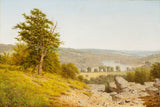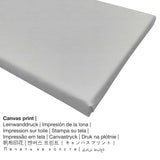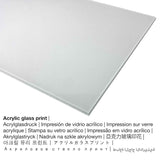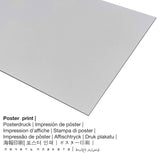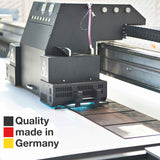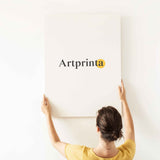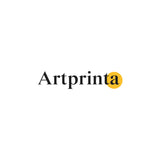Alexander Helwig Wyant, 1865 - Okirikiri ala - ọmarịcha nka
Ụtụ gụnyere. Mbupu gbakọrọ na ndenye ọpụpụ.
Ozi ngwaahịa nka zuru ezu
The mpempe nka na aha Ala kere site na nwoke painter Alexander Helwig Wyant in the year 1865. Nke mbụ tụrụ nha - 17 1/16 x 25 inch (43,34 x 63,5 cm). Mmanụ na kwaaji was used by the American painter as the technique for the work of art. What is more, the artwork is part of the Ụlọ ihe ngosi nka nke Los Angeles County art collection, which is the largest art museum in the western United States, with a collection of more than 142.000 objects that illuminate 6.000 years of artistic expression across the globe. With courtesy of Los Angeles County Museum of Art (www.lacma.org) (nwere ikike: ngalaba ọha).Ezigbo nka nka bụ: . Nhazi nke mmepụta dijitalụ dị na odida obodo format ya na oke nke 3: 2, nke na-egosi na ogologo bụ 50% ogologo karịa obosara.
Họrọ nhọrọ akụrụngwa gị
Ngwa ndetu ngwaahịa na-enye gị ohere ịhọrọ nha na akụrụngwa ọkacha mmasị gị. Ị nwere ike ịhọrọ n'ime nhọrọ nhazi ngwaahịa ndị a:
- Mbipụta kanvas: The UV printed canvas mounted on a wood stretcher frame. It produces the particular look of three-dimensionality. The great advantage of canvas prints is that they are relatively low in weight, which means that it is easy and straightforward to hang up the Canvas print without any wall-mounts. Canvas prints are suitable for all kinds of walls.
- Aluminom dibond mbipụta (ọla): Aluminium Dibond prints are metal prints with a true depth effect, which creates a modern look thanks to a surface structure, which is not reflective.
- Akwụkwọ mmado ebipụtara (akwa akwa akwa): Our poster is a UV printed canvas with a nice surface texture. A poster is designed for placing the art copy with the help of a customized frame. Please bear in mind, that depending on the size of the canvas poster print we add a white margin 2-6cm round about the work of art in order to facilitate the framing with your custom frame.
- Mbipụta iko acrylic (nke nwere ezigbo mkpuchi iko): A glossy print on acrylic glass, which is often labelled as a an art print on plexiglass, makes the original into beautiful décor. The work of art will be printed thanks to the help of state-of-the-art UV print machines. The result of this are stunning, vibrant color tones. With an acrylic glass fine art print contrasts and also minor details become more recognizeable thanks to the delicate tonal gradation. The acrylic glass protects your custom art print against sunlight and heat for many more years.
Nkwupụta iwu: We try our best in order to describe our art products as closely as possible and to display them visually on the product detail pages. Although, the pigments of the print materials, as well as the printing may diverge to a certain extent from the image on the device's monitor. Depending on your settings of your screen and the quality of the surface, not all colors will be printed one hundret percent realistically. Bearing in mind that all the fine art prints are processed and printed by hand, there may as well be slight discrepancies in the motif's exact position and the size.
Banyere ihe a
| Ụdị edemede: | ọmarịcha nka |
| Usoro mmeghari: | dijitalụ mmeputakwa |
| Usoro mmepụta: | UV kpọmkwem obibi |
| Mmalite ngwaahịa: | German mere |
| Stockdị ngwaahịa: | a na-achọ |
| Eji ngwaahịa emebere: | nka mgbidi, ime ụlọ |
| Ndozi onyonyo a: | nhazi odida obodo |
| Njikwa oyiyi: | 3: 2 |
| Ihe: | ogologo bụ 50% ogologo karịa obosara |
| Ụdị ihe dị iche iche dị: | akwụkwọ mmado (akwụkwọ kwaaji), mbipụta enyo acrylic (nke nwere ezigbo mkpuchi iko), mbipụta ọla (aluminium dibond), mbipụta kwaaji |
| Nhọrọ nha nke akwa akwa n'elu etiti ihe na-agbatị (mbipụta kwaaji): | 30x20cm - 12x8", 60x40cm - 24x16", 90x60cm - 35x24", 120x80cm - 47x31" |
| Mbipụta iko acrylic (nke nwere ezigbo mkpuchi iko): | 30x20cm - 12x8", 60x40cm - 24x16", 90x60cm - 35x24", 120x80cm - 47x31" |
| Mpempe akwụkwọ mmado (akwụkwọ kwaaji) nha: | 60x40cm - 24x16", 90x60cm - 35x24", 120x80cm - 47x31" |
| Nhọrọ Dibond (ihe alumnium) nhọrọ: | 30x20cm - 12x8", 60x40cm - 24x16", 90x60cm - 35x24", 120x80cm - 47x31" |
| Nhazi nke nnomi nka: | mmeputakwa na-enweghị isi |
Nkọwa nka ahaziri
| Aha nka: | "Okirikiri ala" |
| nhazi ọkwa: | sere |
| Okwu mkpokọta: | nkà nke oge a |
| Nhazi oge: | 19th narị afọ |
| Emepụtara na: | 1865 |
| Afọ nka: | ihe karịrị 150 afọ |
| Agba na: | mmanụ na kwaaji |
| Nha nke ihe osise izizi: | 17 1/16 x 25 inch (43,34 x 63,5 cm) |
| Ụlọ ihe ngosi nka / mkpokọta: | Ebe ngosi nka nke Los Angeles County |
| Ebe ngosi nka: | Los Angeles, California, Njikota Obodo Amerika |
| Ebe nrụọrụ weebụ ihe ngosi nka: | www.lacma.org |
| Ikikere nke ihe osise: | ngalaba ọha |
| Site n'aka: | Ụlọ ihe ngosi nka nke Los Angeles County (www.lacma.org) |
Ose okwu
| aha: | Alexander Helwig Wyant |
| Aha ndị ọzọ: | alexander h. wyant, alexander wyant, wyant alexander helwig, wyant a.h., Wyant A. H., ויאנט אלכסנדר הלוויג, Alexander Helwig Wyant, Wyant Alexander, Wyant Alexander Helwig, Wyant Alexander H., Wyant, A.H. WYANT, Wyant A. |
| Gender: | nwoke |
| Obodo onye nka: | American |
| Ọrụ onye na-ese ihe: | onye na-ese ihe |
| Country: | United States |
| Nkewa onye nka: | omenkà nke oge a |
| Ndụ: | 56 afọ |
| Amụrụ n'afọ: | 1836 |
| Obodo amụrụ: | Evans Creek, Tuscarawas county, Ohio, United States, ime obodo |
| Afọ nwụrụ: | 1892 |
| Nwụrụ na (ebe): | New York City, New York State, Njikota Obodo Amerika |
© Nchekwa ikike nwebisiinka | Artprinta.com
Ozi mgbakwunye nke Los Angeles County Museum of Art (© - Ụlọ ihe ngosi nka nke Los Angeles County - Ebe ngosi nka nke Los Angeles County)
When this landscape surfaced in the 1940s it bore the title The Mohawk Valley because it resembled a landscape by that name in the Metropolitan Museum of Art, New York. Newly found documentary evidence has led to the identification of the Metropolitan Museum’s landscape as a painting titled Tennessee. Although contemporary references do not mention that Wyant was active in Tennessee, he may have visited the state when he was sketching in neighboring Kentucky during the late 1850s and early 1860s. In 1865 the artist traveled to Düsseldorf, and it was there in 1866 that he painted the Metropolitan’s painting. The Los Angeles Museum’s Landscape resembles the Metropolitan Museum’s Tennessee in Wyant’s general approach to the mountainous landscape: taking an elevated perspective, the artist presented a broad view, delineating the meanderings of a river in the middle distance and placing to one side a single, tall tree that provides a point of entry for the viewer. Both paintings have a similar rocky ledge in the foreground on which the artist stood to view the scene, although in Tennessee the ledge is actually the escarpment of a river. Despite the similarities-many of which may have derived from traditional studio landscape devices there are enough differences to question whether the Los Angeles Museum’s painting is of the same scene of the Grand Canyon of Tennessee in the Cumberland Mountains that has been identified as the site depicted in the Metropolitan Museum’s painting. Read more (Curator Notes)

